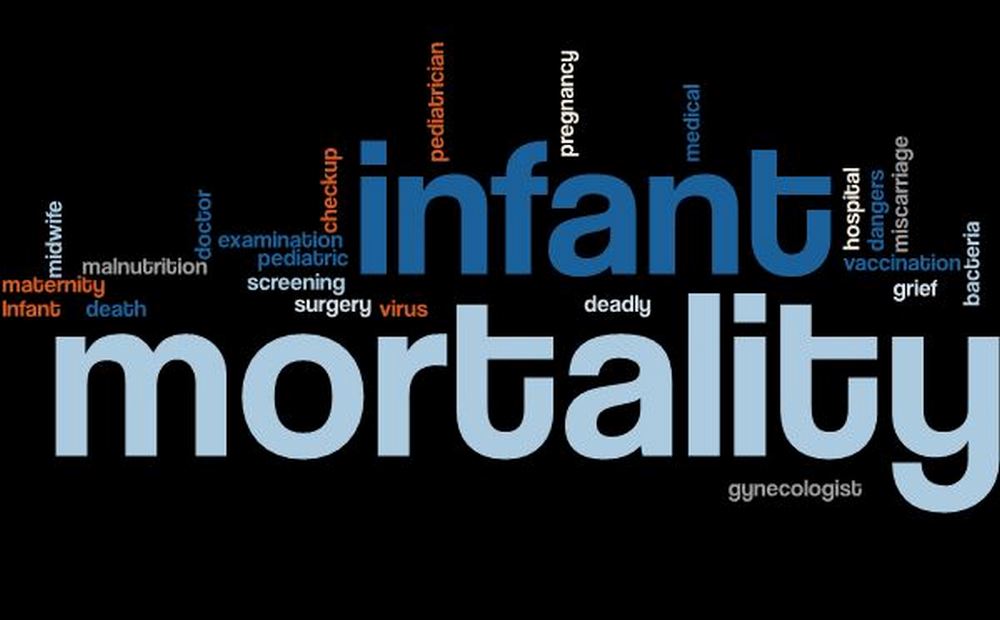
Estimating the Underlying Infant Mortality Rates for Small Populations, Including those Reporting Zero Infant Deaths
Infant mortality is an important population health statistic that is often used to make health policy decisions. For a small population, an infant mortality rate is subject to high levels of uncertainty and may not indicate the “underlying” mortality regime affecting the population. This situation leads some agencies to either not report infant mortality for these populations or report infant mortality aggregated over space, time or both.
A method is presented for estimating “underlying” infant mortality rates that reflect the intrinsic mortality regimes of small populations. The method is described and illustrated in a case study by estimating IMRs for the 15 counties in California where zero infant deaths are reported at the county level for the period 2009–2011. We know that among these 15 counties there are 50 infant deaths reported at the state level but not for the counties in which they occurred.
The method’s validity is tested using a synthetic population in the form of a simulated data set generated from a model life table infant mortality rate, representing Level 23 of the West Family Model Life Table for both sexes. The test indicates that the method is capable of producing estimates that represent underlying rates. In this regard, the method described here may assist in the generation of information about the health status of small populations.
Population Review
Type: Article, pp. 1-22
Estimating the Underlying Infant Mortality Rates for Small Populations, Including those Reporting Zero Infant Deaths: A Case Study of Counties in California
Authors: David A. Swanson, Augustine Kposowa and Jack Baker
Affiliations: Department of Sociology, University of California Riverside, Riverside, California, and Center for Studies in Demography and Ecology, University of Washington, Seattle, Washington (Swanson); Department of Sociology, University of California Riverside, Riverside, California (Kposowa); Health Fitness Corporation, Minneapolis, Minnesota (Baker)
Corresponding author/address: David A. Swanson, Department of Sociology, University of California Riverside, Riverside, California, USA 92521; email: dswanson@ucr.edu
Abstract
Infant mortality is an important population health statistic that is often used to make health policy decisions. For a small population, an infant mortality rate is subject to high levels of uncertainty and may not indicate the “underlying” mortality regime affecting the population. This situation leads some agencies to either not report infant mortality for these populations or report infant mortality aggregated over space, time or both. A method is presented for estimating “underlying” infant mortality rates that reflect the intrinsic mortality regimes of small populations. The method is described and illustrated in a case study by estimating IMRs for the 15 counties in California where zero infant deaths are reported at the county level for the period 2009-2011. We know that among these 15 counties there are 50 infant deaths reported at the state level but not for the counties in which they occurred. The method’s validity is tested using a synthetic population in the form of a simulated data set generated from a model life table infant mortality rate, representing Level 23 of the West Family Model Life Table for both sexes. The test indicates that the method is capable of producing estimates that represent underlying rates. In this regard, the method described here may assist in the generation of information about the health status of small populations.
Keywords
Beta-binomial model, data confidentiality, health policy, underlying mortality regime, stochastic, superpopulation, uncertainty
© 2019 Sociological Demography Press
MLA
Swanson, David A., et al.
Estimating the Underlying Infant Mortality Rates for Small Populations, Including those Reporting Zero Infant Deaths: A Case Study of Counties in California.
Population Review, vol. 58 no. 2, 2019.
Project MUSE, doi:10.1353/prv.2019.0005.
APA
Swanson, D.A., Kposowa, A., & Baker, J. (2019).
Estimating the Underlying Infant Mortality Rates for Small Populations, Including those Reporting Zero Infant Deaths: A Case Study of Counties in California.
Population Review 58(2), doi:10.1353/prv.2019.0005.
Chicago
Swanson, David A., Augustine Kposowa, and Jack Baker.
Estimating the Underlying Infant Mortality Rates for Small Populations, Including those Reporting Zero Infant Deaths: A Case Study of Counties in California.
Population Review 58, no. 2 (2019) doi:10.1353/prv.2019.0005.
Endnote
TY – JOUR T1 –
Estimating the Underlying Infant Mortality Rates for Small Populations, Including those Reporting Zero Infant Deaths: A Case Study of Counties in California
A1 Swanson, David A. A1 – Kposowa, Augustine A1 – Baker, Jack JF – Population Review VL – 58 IS – 2 PY – 2019 PB – Sociological Demography Press SN – 1549-0955 UR – https://muse.jhu.edu/article/727959 N1
Volume 58, Number 2, 2019 ER

